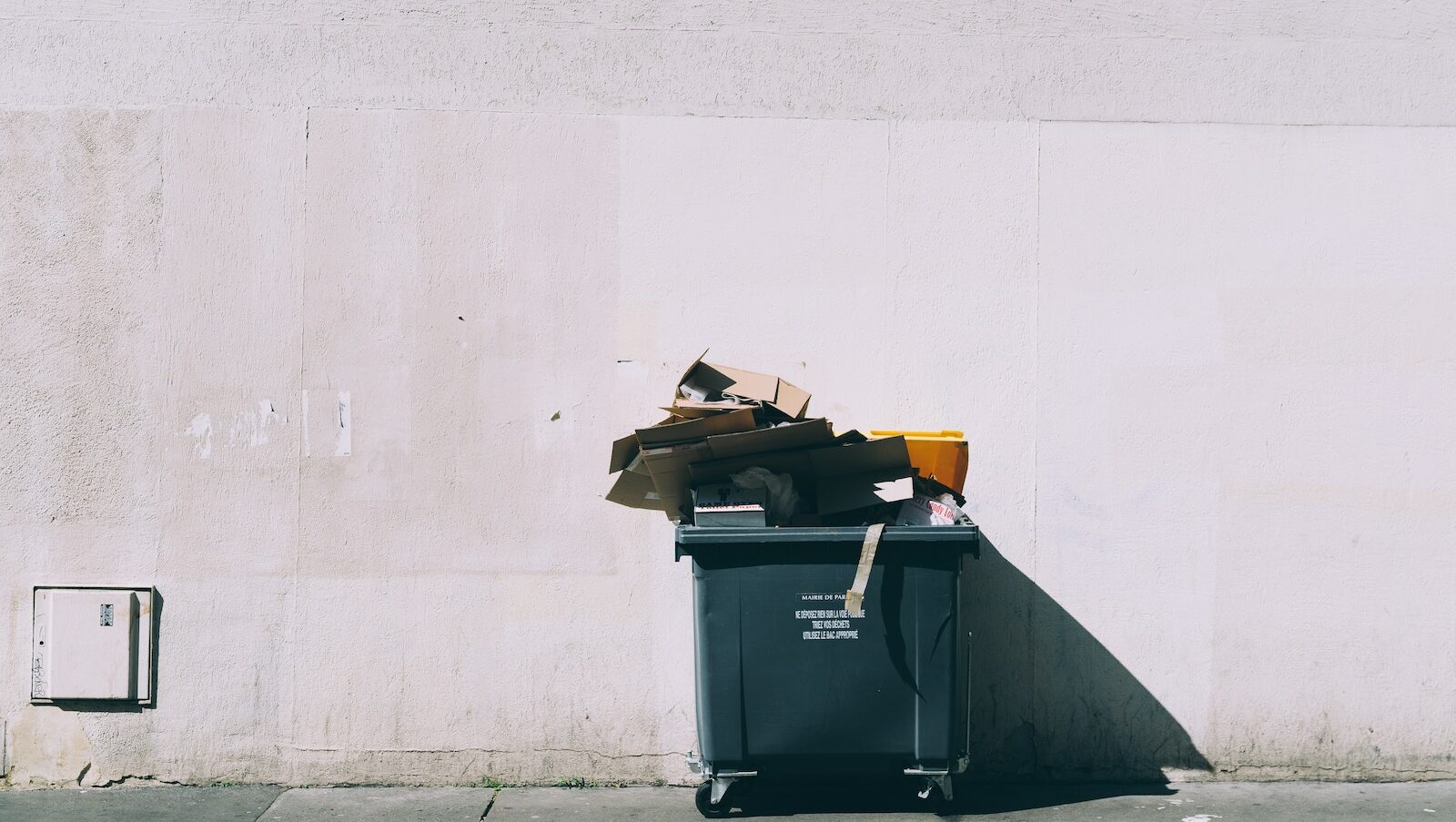9 ways you can sustainably throw away your stuff

I’ve found that the older I get, the more and more I enjoy spring cleaning. Out with the old junk and in with a tidier, more organised living space. A thorough and regular clean out is almost essential when you’re a member of the rental generation, moving house every 12 months.
But there’s a problem. An issue recently brought to the surface by the insane popularity of Marie Kondo’s Tidying Up, when you do decide to completely “Kondo” your home, where do all those joyless objects go? With many old bit and bobs left out on the street and dirty, worn-out clothing dumped out the front of op-shops, it’s not surprising that many of these things end up in landfill.
So what is there to do? Well, there are actually plenty of ways to dispose of your polyester tank tops and IKEA shelves that don’t involve landfill. Here are nine sustainable ways to get rid of your joyless, old stuff.
Sell them back to IKEA
Did you know that IKEA has a buy back scheme in Sydney? It’s unfortunately just at the Tempe store for now, but may expand. Take your old IKEA pieces back to the store and if they’re in a reasonable condition, they’ll buy them off you and sell them onto another good home. So you’ll end up with a couple of extra bucks (or store credit!) and nothing ends up in the bin.
Sell them on eBay or Gumtree
When you sell your old clothes, furniture, phone and more on eBay or Gumtree, not only are you not contributing to landfill, you’re actually reducing the demand for new products. And reducing the need for new products is one of the biggest factors in lowering our carbon footprint. And once again, you’ll make a few extra bucks.
Donate to Charity
But, only donate products of a reasonable quality. And dirty, ripped or worn out clothes will be thrown in the bin at the charity head quarters. So, make sure anything you give to charity whether it be homewares, clothes, tech or furniture, is in a saleable condition.
Use H&M and ZARA clothing recycling bins
Both H&M and ZARA have a clothes recycling service. They accept clothes from any brand in any condition. The nicer pieces are sold secondhand but the damaged pieces are used to make wash cloths or turned into insulation. So this is where you should take your worn out or torn up clothes.
Repurpose what you can
Anything within your home that you can repurpose helps. It will also help combat the carbon footprint that comes with buying new products. For example, I repurpose all my old candle jars. I use one as a toothbrush holder in the bathroom. I have a couple of coloured ones as a dining table centrepiece and the clear glass ones become spare drinking glasses. Old cloth bags become a storage facility for my sheets and I’m even using all my old shoe and jewellery boxes to Konmari my wardrobe. There are plenty of ways to reuse your old things that can help reduce how many new things you buy in the process.
Give things to friends
I think this is a really underrated hack. Whenever I’ve given my friends the opportunity to hunt through my Vinnies bags, they run, not walk. This might be oweing to my being an ex-fashion writer with boujee af taste. But regardless, most people won’t say no to free things if you offer them. Give it a go. Save you lugging all those clothing bags to H&M or furniture to a charity bin.
Have clothing altered
If the only reason you’re throwing out a pair of pants is because they’re too big, why not just have them altered? Yes, it might be a hassle, but it saves you throwing them out into landfill and it reduces your need for a new pair. Altering clothing is much more eco-friendly than ditching it and buying new stuff.
Start to compost
If you can, why not compost? And not just to stop foodscraps from going into landfill. You know those plastic bags that say “bio-degradable”? Well, did you know that these “bio-degradable” plastics need heat, soil, worms and organic matter to degrade? Otherwise, they can takle just as long to breakdown as regular plastic. When you compost, you can toss your bio-degrable plastics in too and actually have them breakdown efficiently.
Reuse tissue paper, wrapping paper and boxes
I know this is an annoying thing your grandma used to do, but you need to get in the habit too. It’s too easy to just throw things in the recycling bin. The first two of the three “r”s are “reduce” and “reuse”. Saving and reusing things like old wrapping paper will certainly reduce your need to buy new stuff.
(Image by Jilbert Ebrahimi)
Mia Steiber is an editor, journalist, strategist and SEO whizz. She’s been a beauty writer, fashion journalist and finance writer for over a decade. In the past, she has written for brands like POPSUGAR, Cosmopolitan Australia, Gizmodo, Mamamia, The Daily Telegraph and Finder. You may recognise her face from her appearances on Sunrise and Channel 7 News where she’s talked about all things fashion and beauty. She has a Bachelor's degree in journalism and certification in travel writing. A slashie through and through, Mia is currently the Digital Strategy Director at RUSSH Magazine and the Editor-in-Chief at finance site RateCity. She started Redaktör with her partner Luke so she could have her own space to share her years of expertise in beauty, fashion, travel and money - reviewing the best in luxury products and experiences. In her spare time, Mia is a collector of cats, a lover of skincare, a world traveller and a passionate gardener.

